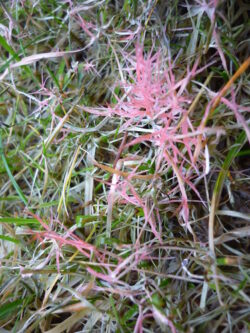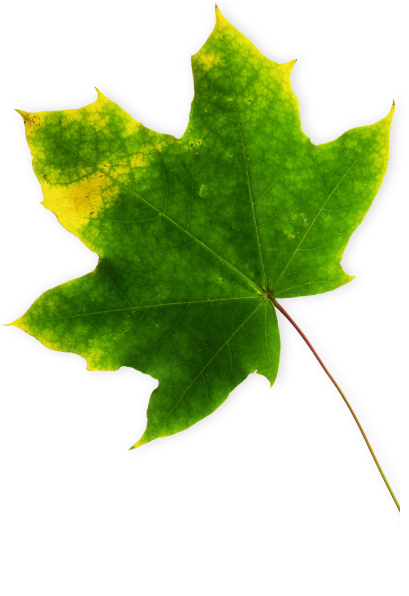Red Thread in lawns looks like its name suggests, light pink or reddish threadlike patches. Infected turfgrass will turn light tan, and the leaf tips or margins may be covered with fine pink to red threads, giving the turf an overall pink coloration.
How? When?
 Red Thread, also known as Pink Patch, appears within lawns during the cooler and more humid times of year. It is most severe on slow growing, nitrogen-deficient lawns during damp weather. Certain types of grasses that are prone to Red Thread include bluegrasses, bentgrass, fescues, bermudagrass, and perennial ryegrass.
Red Thread, also known as Pink Patch, appears within lawns during the cooler and more humid times of year. It is most severe on slow growing, nitrogen-deficient lawns during damp weather. Certain types of grasses that are prone to Red Thread include bluegrasses, bentgrass, fescues, bermudagrass, and perennial ryegrass.
Pathogen and Symptoms
This particular fungus overwinters on the leaf blade, and in the grass clippings of previously infected plants. The leaves and leaf sheaths appear to be the only grass parts that become diseased. Symptoms will quickly begin in small water soaked spots that rapidly enlarge to cover a large portion of the leaf or the entire leaf sheath. As these spots continue to get larger, the tissue will dry out resulting in gradual fading to a tan color. In moisture-saturated air, the leaves may be covered with pink fungal growth, which along with the grass tissue, forms thread-like material upon drying out. Patches of infected grass can range from two inches to three feet in diameter.
Conditions That Red Thread Favors
Development of the disease is favored by air temperature in the 68˚-75˚F. range, coupled with prolonged periods of moisture-saturated atmosphere (rains, heavy dew, and fog). Increased severity occurs on lawns growing in soil deficient in nitrogen, phosphorus, or potassium.
Cultural Control
Red Thread is best controlled with a combination of proper cultural practices and fertilization. Since this disease can occur on turf that is lacking nitrogen, and or stressed, check these areas first. Feel free to let us know if you believe the lawn could use a fertilization application, and we will be sure to take a look at the condition of the lawn. By watering the lawn deeply and infrequently, it will allow for the lawn to not be as wet for long periods of time. However, do not allow turf to become excessively dry. Checking the thatch depth is tremendously important because thick thatch layers are conducive to disease development. If thatch is thick or soil is compacted, aerate for a healthier lawn.
Chemical Control
Usually in a home lawn situation, Red Thread is not severe enough to justify chemical control. If the problem is severe and chemical control is desired, plan on applying the controls as a preventative before the onset of the disease.
We hope you have found this information helpful. If at anytime you suspect Red Thread in your lawn and would like us to look, please call us at
